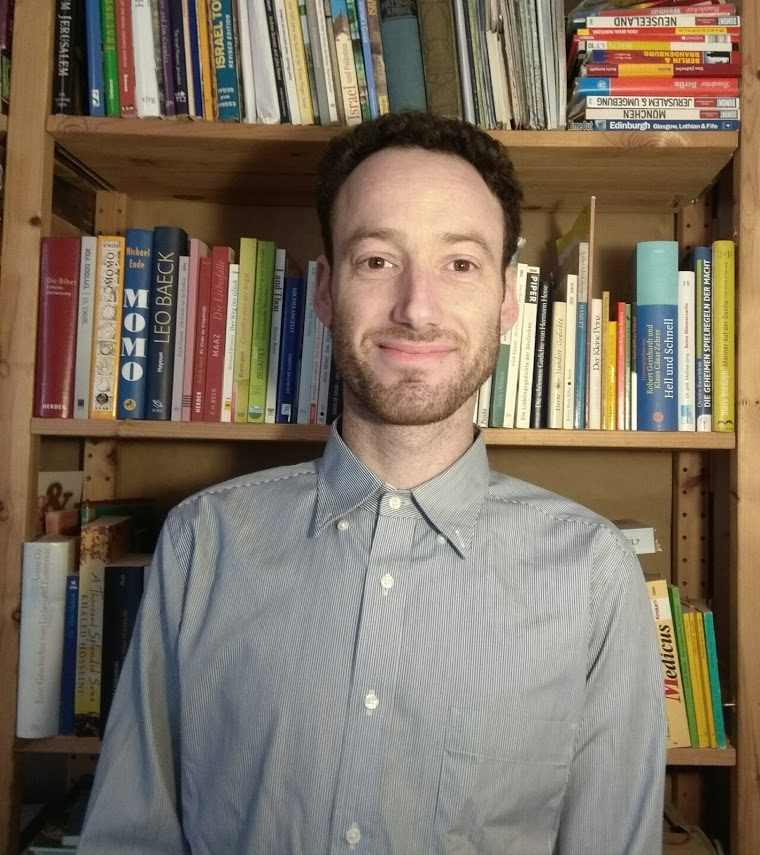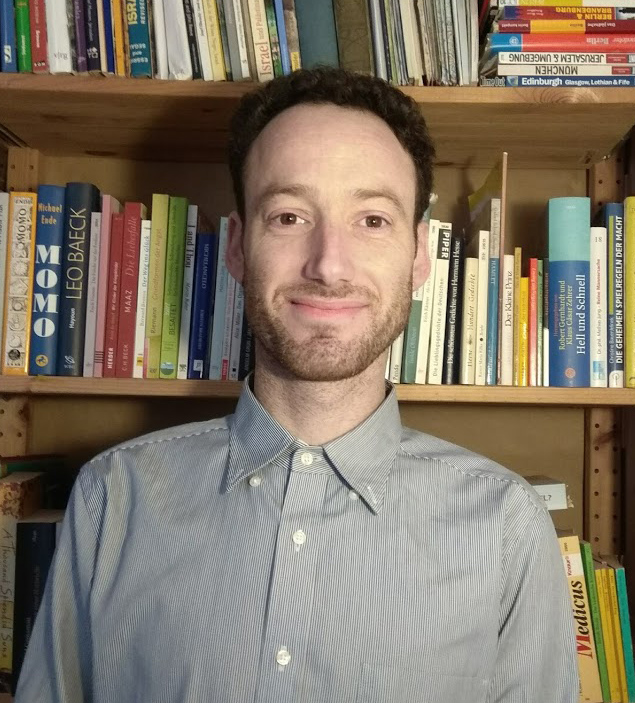Former Curator Feller Expert on Jewish Philosophy, Museum Studies


Yaniv Feller is the Jeremy Zwelling Assistant Professor of Jewish Studies and assistant professor of religion. Feller specializes in Jewish philosophy, Jewish-Christian relations, post-Holocaust theology, material culture and museum studies. His current book project is titled “Leo Baeck and the Tradition of Dialogical Apologetics.” Prior to Wesleyan, Feller worked as an exhibition curator for the new permanent exhibition project at the Jewish Museum Berlin.
In this Q&A, Feller speaks about his time working at a renowned Jewish museum, the importance of incorporating the lives and histories of objects into his courses and woodworking.
Q: You just joined the faculty at Wesleyan this year. What are you enjoying and how would you characterize your new academic home?
A: It is hard to believe that a semester has already passed—time flies by when you are having fun! Reflecting on the last couple of months, I realize that Wesleyan is indeed everything I hoped it to be: it is a passionate community of learners, and this is true of faculty and students alike. I obviously heard about how smart and engaged people at Wesleyan are, and it was a pleasure to discover that sometimes, positive reputation is more than justified.
Q: What courses are you teaching this spring?
A: I am teaching RELI 203, Jews and Judaism, and RELI 213, Refugees and Exiles: Religion in the Diaspora.
Q: Do you have a favorite course? (Or is that like asking a parent about a favorite child?) Is there one that seems particularly well received or apropos?
A: It IS a bit like asking for a favorite child. I like them all! I like to teach classes that examine Jewish history and philosophy as a springboard for larger theoretical questions, or ones that ask the theoretical questions through a series of case studies. Perhaps most relevant this semester is “Refugees and Exiles” in which we will examine contemporary discussions on refugees in light of philosophical, literary and historical perspectives. What do narratives about the destruction of the Jerusalem Temple, for example, have to teach us about today? More than you might suspect.
Q: You came to us from your position as an exhibition curator at the Jewish Museum in Berlin. Did you initially plan on a curatorial—rather than teaching—career? What had drawn you there?
A: I was part of a team that works on the museum’s new permanent exhibition. I never planned on working at a museum, and had no previous experience, but it was such a rare opportunity. It is not every day that you get to work in such a renowned Jewish museum that is hosted in an architectural masterpiece by Daniel Libeskind. The chance to learn something new while hopefully making a modest contribution to the shaping of how people perceive German-Jewish history for years to come was too good to pass.
Q: And how would you describe your transition to Wesleyan?
A: I had to adjust to new working and living conditions. As you can imagine, I was a bit concerned about this new life path. I am happy to say that the adjustment hasn’t been as difficult as I imagined. For that I have my colleagues at the Religion department to thank, they have been very supportive and are always there with sage words of advice.
Q: What were the joys and challenges of being a curator?
A: It was a humbling experience. Working as a curator requires you to pay attention to space and physical objects in ways that would have never occurred to me otherwise. At the same time, you are required to explain central ideas and themes in a way that will be accessible and visually appealing to the visitor, who might be visiting not because of Jewish life and history but because of Libeskind’s architecture, or simply because it is raining outside!
This is a challenge, but it is also a great joy, when you come up into a productive dialogue between curators and designers about creative, nontextual ways to materialize these ideas, for example using films, sounds and the placement of material objects in space.
Q: What do you think the curatorial experience brought to your teaching? And what does it bring to our community?
A: The two years I spent at the Jewish Museum had a big impact on how I perceive teaching and on my own research.
First and foremost, it has encouraged me to minimize my use of academic jargon. My academic training has been in the study of religion and Jewish philosophy, where there is sometimes a tendency for using technical and discipline-specific language. This is not something you can do in a museum that opens its doors to about half a million visitors a year, coming from various nationalities and religious backgrounds. After the museum, I feel the need to write in a much more accessible form. Even if the arguments themselves remain just as complex, there is usually a way to present them in a way that a broader public will be able to follow them.
Second, and this relates both to my research and my teaching, I have developed a growing interest, a certain fondness, to material culture, and to the ways in which objects are treated in a museum. Objects have histories, they are produced, used, traded, travel, hurt, recycled, repurposed and sometimes find their ways into museums.
In my teaching, I make sure to incorporate the lives and histories of objects into my courses. It is one thing to talk about the Hebrew Bible in its relation to Jews and Christians. It is another to understand that a Torah scroll as a Jewish material object is produced differently than a Bible in a book format. The former has very specific conditions and regulations. Bringing the physical objects into the classroom allows us to ask a different set of questions than the ones posed if we were just looking at the texts.
Working at the museum has also opened my eyes to the way museums use and misuse objects. Alongside my work on the German-Jewish rabbi and philosopher Leo Baeck, the leader of the German-Jewish community during the Holocaust, I have taken up the study of museums and Jewish material culture as my second passion. What does it mean to place a religious object behind a glass case? How do religious objects change their meaning when they leave the immediate context for which they were used? What techniques do museums use in order to ascribe meaning to objects? In other words, what is at stake when we take something and place it in the context of the museum? These are the type of questions I ask, because I believe they are relevant to the ways we shape our past, both with respect to the colonial legacy (ethnographic museums) and to the ways museums attempt to construct meaning today (national museums).
Given my interest in museums, I am also looking forward to offering (in the near future) a class that will deal with museums and religion.
Q: You have a forthcoming article titled, “Oy Tannenbaum! The Christmas Tree of the Jewish Museum Berlin.” It sounds both utterly charming—the play on words, the Yiddish “Oy” to replace the “O” of the traditional Christmas carol—and utterly essential for modern life and our multicultural cities.
A: Thanks! The Jewish Museum Berlin used to have a Christmas tree as part of its discussion of German-Jewish history in the modern period (I say “used to” because the JMB’s permanent exhibition just closed). Yes, a Jewish museum presented a Christmas tree at quite a prominent place. Why is that? What role does this tree play in the historical narrative of the museum? Taking this a step further, what kind of an object is this tree? Is it historical? How does it relate to other objects in its vicinity? So many questions by looking at just one thing. In hindsight, maybe that’s another reason why I had to say “Oy”!
Q. And, a final question: What are your hobbies and interests outside of Wesleyan?
A: I enjoy outdoor activities such as hiking and running. I am also a big fan of board games. More recently, I started learning woodworking. My greatest achievement in this field to date is maintaining all 10 fingers intact.

